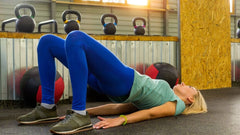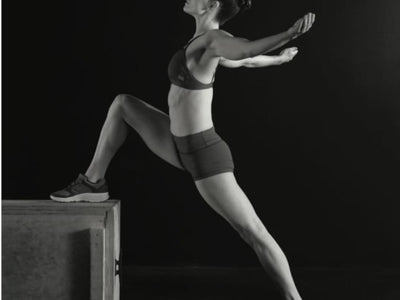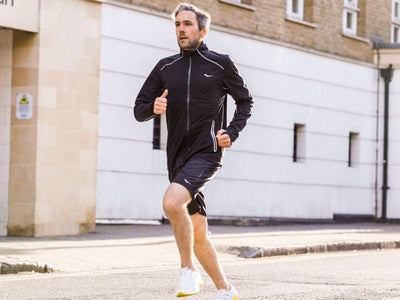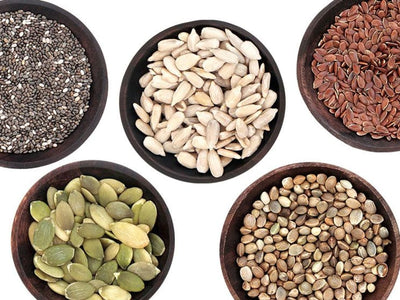Strengthen Your Joints With These Hip And Knee Exercises
Posted by Nick Harris-Fry on

Muscles aren’t the only things that get stronger with resistance training.
One of the most common mistakes people make with resistance training is to assume that it’s something that only youngsters looking to build bulging muscles should do. The truth is that everyone can benefit from resistance training, and those who suffer from joint pain in particular will find it can greatly improve the strength and mobility of their body.
For more information on the benefits of resistance training for your joints, we spoke to Nuffield Health’s head of physiotherapy John Doyle.
Who should be doing exercises to strengthen their joints?
“Virtually everyone can benefit from undertaking resistance or strength training exercises,” says Doyle. “There are a huge number of positive benefits that can be gained through this form of activity, not just muscle size gains.
“Physiotherapists find that a lot of people think strength training is only for those who are young, fit and healthy, and believe that they shouldn’t do it because they have pain, they are too old or too unfit, or because they are worried they might hurt themselves. However, these are the people who can benefit the most. In terms of strength training, there is generally no such thing as a bad exercise – it is just a case of knowing where to start and how to progress sensibly to achieve individual goals.
“Strength training has been proven to be effective in both the treatment and prevention of joint pains such as back pain, shoulder pain and arthritis. In fact, strength training should be an integral part of treatment for all musculoskeletal conditions and has been recommended by the National Institute of Clinical Excellence.”
Can strength training help reduce joint pain?
“Pain is highly complex and involves many factors that all interact to create the experience of pain that each individual feels,” says Doyle. “However, strength training can positively affect many of these factors.
“Undertaking resistance training has been proven to reduce the level of chemicals in the body related to inflammation. Less inflammation can result in significant improvements in pain.
“Strength training is a really effective way to help people lose weight. Many people still believe that in order to lose weight they must undertake cardiovascular exercise, but high-intensity resistance training can deliver great results too. This has a direct impact on pain through a reduction in stresses and strains on the joint but also potentially through a reduction in chemicals related to inflammations.”
How often should you do resistance training?
“The required frequency and intensity of resistance exercise remains a hotly debated topic,” says Doyle. “The reality is that something is better than nothing and everyone has to start somewhere. Getting into a routine with goals will help keep up the motivation to continue to exercise. The benefits aren’t immediate and can take many weeks to appear, so it is important that people stick with it.”
Joint-Strengthening Exercises
Doyle recommends doing the following four exercises to strengthen the hip and knee joints. If you have already suffered from symptoms of osteoarthritis, common signs of which include soreness, swelling or aching in the joints during or after activity, check with a healthcare professional before tackling the exercises.
Wall squat
Sets 3 Reps 15 Rest 30sec
“Stand with your back against a wall with your feet about 60cm away from the wall,” says Doyle. “Slide down the wall by bending your knees as far as you can comfortably go. Pause briefly at the bottom of the squat, then straighten your knees to slide back up the wall.”
Glute bridge
Sets 3 Reps 15 Rest 30sec
“Lie on the floor with your knees bent so that your feet are flat on the floor and slightly apart,” says Doyle. “Lift your hips up from the floor as high as you comfortably can manage. Pause briefly at the top, then slowly lower your hips to the floor.”
Single-leg balance
Reps 3 each leg Time 30sec
“Practise standing on one leg with a straight or slightly bent knee,” says Doyle. “Have something solid nearby to hold on to in case you lose your balance.”
Straight-leg raise
Sets 3 Reps 15 Rest 30
“Lie on your back with one knee bent and the other straight,” says Doyle. “Lift the straight leg 30cm off the floor making sure you keep it straight. Pause briefly, then lower back to the floor.”
The above exercises should be suitable for people of all fitness levels, but if you are already a regular gym-goer Doyle suggests doing these three additional exercises.
Romanian deadlift
“Many people are put off deadlifts worrying that having a slight bend to their back will have disastrous consequences,” says Doyle. “My advice would be to start light and build up the weight as you feel able. Also if you don’t feel confident doing a full deadlift, reduce the range of motion.”
For the Romanian deadlift you start with the barbell in your hands, rather than on the floor. With a slight bend in your knees, lower the weight until you feel a slight stretch in your hamstrings, then drive your hips forwards and use your hamstrings to stand back up.
Goblet squat
“This is technically easier than the back squat but still demanding on the big muscles in your legs and trunk,” says Doyle. “Hold a dumbbell or kettlebell with both hands, tucked in to your chest. Descend slowly as far as you feel comfortable, sticking your bottom out as if you were going to sit down on a chair. As you rise from the squat position, concentrate on pushing your hips forwards. Some people like to have a chair or gym bench behind them as they learn the technique to help them know how low to go.”
Hip thruster
“These are a great way of really working the gluteal muscles hard,” says Doyle. “These muscles are absolutely vital for strong and pain-free hip and knee joints. Sit with your bottom on the floor and your upper back against a weights bench. With the feet flat on floor drive your hips up by pushing your heels into the floor. At the top of the movement your shins should be vertical. Pause at the top of the movement and squeeze your glutes as hard as you can, then slowly lower to the floor. When you master this, you can add weight by holding a barbell across your hips.”
Written by Nick Harris-Fry for Coach and legally licensed through the Matcha publisher network. Please direct all licensing questions to legal@getmatcha.com.








